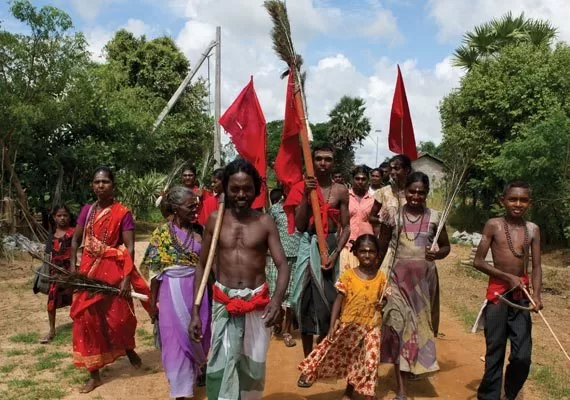Genetic Study Reveals Close Links Between Sri Lanka’s Vedda People and Indian Tribal Populations

News Mania Desk/ Agnibeena Ghosh/21th April 2024
A recent genetic study has shed new light on the origins of Sri Lanka’s Vedda people, providing compelling evidence of their deep-rooted connections with tribal populations in India. Led by a team of scientists from India and Sri Lanka, the study delves into the genetic makeup of the Vedda, challenging longstanding assumptions about their ancestry and shedding light on their unique genetic heritage.
Published in the scientific journal Mitochondrion, the study unveils the striking genetic similarity between the Vedda and five Indian tribal populations: the Austroasiatic Munda-speaking Santhal and Juang tribes in Odisha, and the Dravidian-speaking Irula, Paniya, and Pallar communities in Karnataka, Kerala, and Tamil Nadu. This discovery challenges previous notions and strengthens the argument for the Vedda’s roots in the earliest modern human populations of the Indian subcontinent.
Gyaneshwer Chaubey, a population geneticist at Banaras Hindu University who supervised the study, expressed surprise at the findings, highlighting Sri Lanka as a fascinating region where distinct populations have coexisted for millennia. Unlike the Sinhalese and Tamil populations, who exhibit significant genetic mixing, the Vedda have maintained their genetic isolation, preserving their unique identity over time.
Archaeological evidence suggests that modern humans have inhabited Sri Lanka for over 30,000 years, with the Vedda considered the island’s earliest indigenous inhabitants. As the sole indigenous population of Sri Lanka, the Vedda have long intrigued researchers due to their distinct language and culture. Kumarasamy Thangaraj, a scientist from the Centre for Cellular and Molecular Biology, Hyderabad, noted that the study provides valuable insights into the Vedda’s genetic origins and their affinities with Indian populations.
Linguistically isolated, the Vedda language remains unrelated to any known language, underscoring the uniqueness of their cultural heritage. For the study, genetic material was extracted from blood samples collected from 37 unrelated Vedda individuals, allowing researchers to compare their genomic segments with those of other populations.
The maternal ancestry analysis suggests that the Vedda are descendants of migrants from the Indian subcontinent who arrived approximately 55,000 years ago, likely as a branch of modern humans expanding out of Africa into India and Asia. This deep common genetic ancestry with early Indian tribal populations highlights the Vedda’s distinct demographic history and underscores their genetic isolation despite their proximity to the Sinhalese and Tamil populations.
Lead author Anjana Welikala from Colombo University emphasized the Vedda’s preservation of their genetic makeup despite limited gene flow from neighboring populations. RuwandiRanasingh, another author from Colombo University, noted that the study’s findings challenge previous assumptions and highlight the Vedda’s unique genetic heritage.The study’s revelations come amidst broader research into the genetic history of Sri Lanka’s populations. A previous study by Ranasingh and her collaborators demonstrated high levels of genetic similarity between the island’s Sinhalese and Tamil populations, indicative of centuries of intermingling despite their distinct arrival histories.






